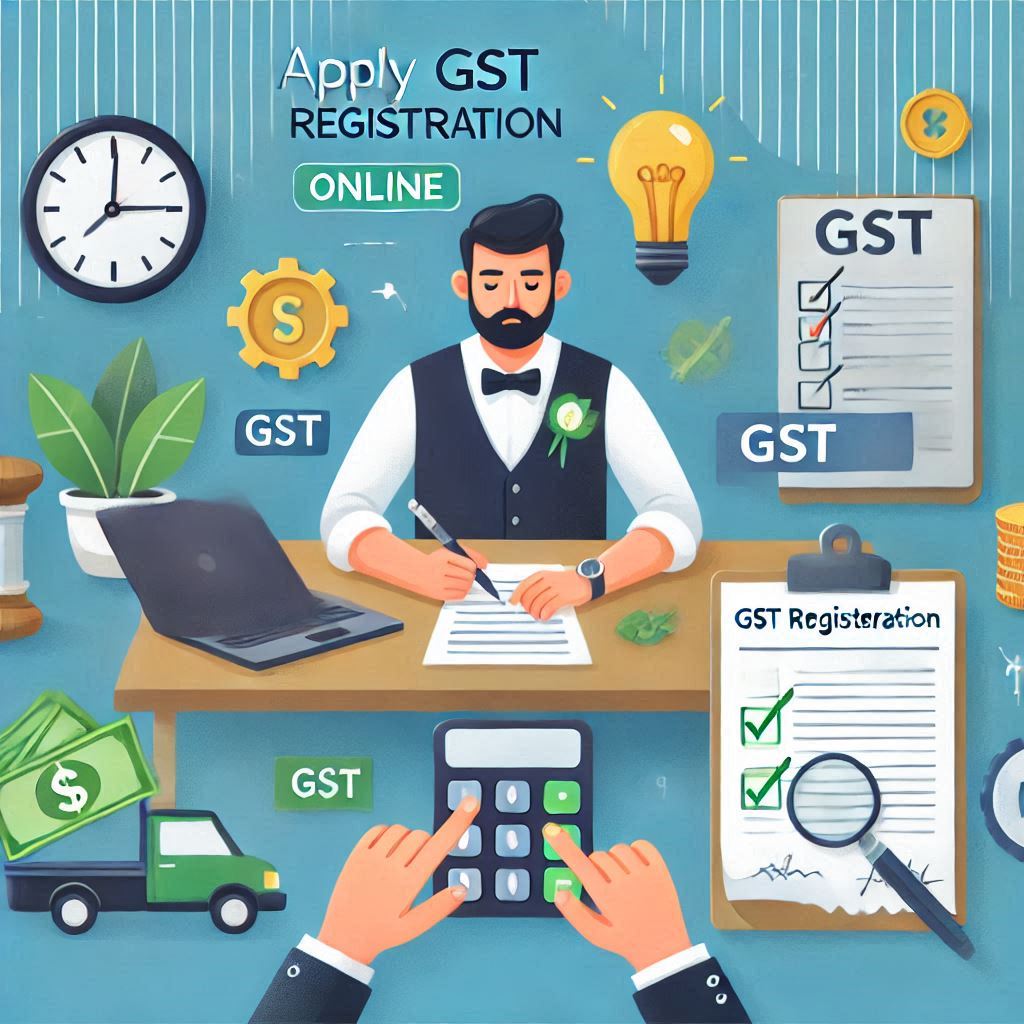The Goods and Services Tax (GST) has drastically changed the way businesses manage their tax obligations in India. However,(Technology) navigating the complexities of GST compliance can often be overwhelming for businesses, especially with frequent rule changes and the need for precise documentation. As we approach 2025, technology is emerging as a key player in simplifying GST compliance, reducing the burden on businesses, and improving efficiency. Vivek Sharma believes that leveraging technological tools can ensure smooth GST compliance and contribute to the growth of businesses across sectors. This article explores the role of technology in simplifying GST compliance in 2025.
1. Automated GST Filing
The Challenge
One of the most time-consuming aspects of GST compliance is the manual filing of GST returns. Businesses need to collate and verify data, file returns on time, and ensure that their tax records are accurate and up to date. Missing deadlines or submitting incorrect information can lead to penalties and fines, creating unnecessary stress for businesses.
The Role of Technology
In 2025, automated GST filing tools are playing a crucial role in easing this process. Software solutions are being developed to automatically generate and file GST returns based on real-time transaction data. These tools automatically extract information from invoices, purchase records, and sales data to calculate GST liabilities and file returns.
Benefits
- Accuracy: Automation minimizes human error and ensures accurate calculations.
- Time-Saving: Businesses no longer need to manually track transactions and input data, as the system handles it.
- Reduced Penalties: Automated reminders for due dates and tax filings help businesses stay compliant and avoid penalties.
Example: Businesses can use cloud-based accounting software like Tally or Zoho Books, which automatically sync data, generate GST-compliant invoices, and submit returns directly to the GST portal.
2. Artificial Intelligence (AI) for GST Data Validation
The Challenge
GST compliance involves dealing with large volumes of data, such as sales, purchases, and invoices. Inaccurate or incomplete data can lead to discrepancies, errors, and audits. Manually cross-checking and validating this data is cumbersome and prone to mistakes.
The Role of Technology
Artificial Intelligence (AI) is increasingly being used to automate data validation. AI-powered tools can scan transaction data for inconsistencies or errors and ensure that everything aligns with GST guidelines. These tools can also learn from previous mistakes, becoming more efficient over time.
Benefits
- Error Detection: AI systems can detect common mistakes like mismatched tax rates, incorrect HSN/SAC codes, or discrepancies between input and output tax.
- Real-Time Corrections: AI systems can immediately flag issues, allowing businesses to correct them before filing returns.
- Improved Compliance: AI helps businesses stay aligned with constantly evolving GST rules and regulations.
Example: AI systems like QuickBooks and ClearTax help validate invoices and flag discrepancies between GSTR-1 and GSTR-3B filings, improving data accuracy.
3. Blockchain for GST Transparency and Security
The Challenge
Fraudulent practices such as underreporting income, overstating input tax credits, and issuing fake invoices are major challenges for tax authorities. These issues result in significant tax losses and hinder the overall effectiveness of GST implementation.
The Role of Technology
Blockchain technology offers a revolutionary solution to combat tax fraud and ensure transparency. Since blockchain records transactions in a decentralized and immutable ledger, it ensures that once data is entered, it cannot be altered or deleted. This level of transparency makes it impossible for businesses to manipulate their records.
Benefits
- Fraud Prevention: Blockchain’s transparency and immutability make it easier to track tax-related transactions and prevent fraud.
- Real-Time Auditing: Tax authorities can access an immutable ledger of all transactions, facilitating real-time audits and ensuring better compliance.
- Efficiency: Blockchain minimizes the time needed for reconciliation and verification of tax records.
Example: In India, blockchain solutions are being piloted by tax authorities to verify and cross-check GST transactions between businesses, ensuring authenticity and reducing fraud.

4. Cloud-Based GST Solutions
The Challenge
Maintaining accurate records for GST compliance can be burdensome, particularly for small businesses that lack the infrastructure to manage complex tax calculations. Without a centralized system, tracking transactions and managing tax obligations can lead to inefficiencies and errors.
The Role of Technology
Cloud-based GST solutions provide businesses with the ability to store, access, and manage their GST data securely from any device. These platforms offer integration with accounting, invoicing, and inventory systems, allowing for seamless data flow and real-time updates.
Benefits
- Accessibility: Cloud solutions allow businesses to access their data from anywhere, at any time, and on any device.
- Scalability: As businesses grow, cloud-based systems can easily scale to meet their changing needs.
- Security: Cloud services use encryption and other security measures to protect sensitive tax data.
Example: Popular cloud-based platforms like GSTN’s GST portal, Xero, and Tally Cloud allow businesses to file returns, manage compliance, and store data without the need for on-site IT infrastructure.

5. Electronic Invoicing (E-Invoicing)
The Challenge
The process of creating, sending, and storing invoices manually can be prone to errors. Incorrect invoicing can lead to issues with GST returns and tax audits, resulting in penalties for businesses.
The Role of Technology
E-invoicing is a system where businesses create and submit invoices electronically to the GST portal for validation. The system automatically generates an e-invoice reference number (IRN) and a QR code for each invoice, ensuring that it meets GST requirements. This eliminates errors related to paper invoices and streamlines the process of matching invoices with GST returns.
Benefits
- Instant Validation: E-invoicing ensures that invoices are automatically validated, reducing the chances of errors.
- Efficiency: The e-invoicing system eliminates the need for manual data entry and reduces paperwork.
- Audit Readiness: With e-invoicing, all invoices are stored electronically and are easily accessible for audits.
Example: E-invoicing solutions integrated into software like Zoho Invoice and Tally ERP allow businesses to create, validate, and store invoices seamlessly while ensuring compliance with GST regulations.
6. Data Analytics for GST Compliance Insights
The Challenge
For businesses to stay compliant, it’s crucial to understand their tax obligations and identify areas where they might be overpaying or underreporting. Manually analyzing tax data for insights can be complex and time-consuming.
The Role of Technology
Data analytics tools allow businesses to analyze their GST data and gain insights into their tax positions. These tools can highlight areas where tax liabilities are higher than expected, detect discrepancies, and identify opportunities for tax savings.
Benefits
- Informed Decision-Making: Businesses can make better decisions by analyzing their GST data to optimize tax liabilities.
- Trend Analysis: Businesses can track their tax history over time and make adjustments to avoid future issues.
- Improved Compliance: Analytics tools help businesses spot potential issues before they become compliance problems.
Example: Platforms like ClearTax Analytics and Zoho Analytics offer businesses in-depth analysis of their GST data, helping them to monitor their tax filings and ensure compliance.
Conclusion
As GST compliance becomes more complex in 2025, technology will play an increasingly crucial role in helping businesses navigate the system efficiently. From automated GST filing and AI-powered data validation to blockchain for transparency and cloud-based solutions for easy access, businesses now have a wide range of technological tools at their disposal to simplify their GST obligations. Embracing these technologies will not only save time and reduce errors but also ensure that businesses remain compliant with evolving GST regulations.
Suggestions for Improvement:
- Stay Updated: Businesses should continuously update their GST software to stay aligned with the latest GST rules and amendments.
- Train Staff: It’s essential to train employees on using GST-related technologies to maximize their potential.
- Integrate Systems: Integrating GST systems with other business management tools (inventory, accounting, CRM) will improve data accuracy and streamline the process.
By embracing technology, businesses can unlock the full potential of GST compliance, making it a seamless and efficient part of their operations.
Stay tuned to computeracademy.in for the latest updates and tips on GST compliance.
